-
 Bitcoin
Bitcoin $108,489.6704
1.13% -
 Ethereum
Ethereum $2,502.0528
2.92% -
 Tether USDt
Tether USDt $1.0002
0.00% -
 XRP
XRP $2.1941
0.51% -
 BNB
BNB $655.3375
1.00% -
 Solana
Solana $151.5977
1.27% -
 USDC
USDC $0.9999
0.00% -
 TRON
TRON $0.2768
0.32% -
 Dogecoin
Dogecoin $0.1676
2.86% -
 Cardano
Cardano $0.5675
0.98% -
 Hyperliquid
Hyperliquid $40.6109
7.48% -
 Bitcoin Cash
Bitcoin Cash $500.7746
2.09% -
 Sui
Sui $2.8328
2.03% -
 Chainlink
Chainlink $13.4452
1.26% -
 UNUS SED LEO
UNUS SED LEO $9.1623
0.39% -
 Avalanche
Avalanche $18.2267
2.24% -
 Stellar
Stellar $0.2382
0.00% -
 Toncoin
Toncoin $2.8885
1.68% -
 Shiba Inu
Shiba Inu $0.0...01159
0.91% -
 Litecoin
Litecoin $87.1827
0.88% -
 Hedera
Hedera $0.1511
2.90% -
 Monero
Monero $315.4992
-0.59% -
 Polkadot
Polkadot $3.4663
2.34% -
 Bitget Token
Bitget Token $4.6118
-0.65% -
 Dai
Dai $1.0000
-0.01% -
 Ethena USDe
Ethena USDe $1.0003
0.02% -
 Uniswap
Uniswap $7.2989
4.69% -
 Pepe
Pepe $0.0...01003
5.73% -
 Aave
Aave $275.5616
7.15% -
 Pi
Pi $0.5181
-2.49%
How will the time-sharing chart go the next day after a sharp pull at the end of the trading day?
A sharp pull in crypto markets often shapes the next day's time-sharing chart by influencing trader psychology, liquidity, and technical patterns.
Jun 30, 2025 at 02:35 pm
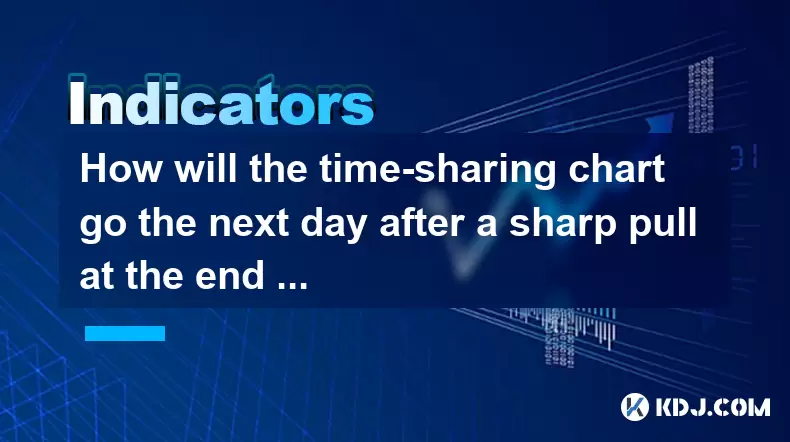
Understanding the Time-Sharing Chart and Its Relevance
The time-sharing chart is a crucial tool used by traders in cryptocurrency markets to track real-time price movements of an asset throughout the trading day. Unlike traditional candlestick charts, which show aggregated data over fixed time intervals (e.g., 1-hour or 4-hour), the time-sharing chart displays every tick or trade executed during the session. This allows for granular insight into how buyers and sellers interact moment-by-moment.
When a sharp pull occurs at the end of the trading day, it can significantly affect how the next day's chart unfolds. A sharp pull typically refers to a sudden, steep drop or rise in price just before the close of a given period. Traders pay close attention to these moments because they often signal institutional activity, profit-taking, or market manipulation.
A key question arises: How does this late-day movement influence the following day’s time-sharing chart?
Analyzing the Impact of a Sharp Pull on Market Psychology
Market psychology plays a pivotal role in shaping the next day’s time-sharing chart after a sharp pull. When prices experience a dramatic move right before the close, it leaves traders with fresh memories of that action. These psychological imprints can lead to either panic selling or aggressive buying when the next session begins.
For instance, if the price of a major cryptocurrency like Bitcoin drops sharply in the last 30 minutes of trading, holders may feel uneasy overnight. This anxiety often translates into increased sell pressure early the next morning, causing the time-sharing chart to open lower than expected.
- Traders who were caught off guard might liquidate their positions immediately.
- New traders might interpret the sharp pull as a bearish sign and short the asset.
- Automated trading bots may trigger programmed responses based on closing patterns.
These behavioral tendencies contribute to volatility and shape the trajectory of the time-sharing chart.
Examining Historical Patterns and Repetition
Historical data suggests that sharp pulls near the close are not random events but often part of recurring market behavior. In crypto markets, especially those with high leverage usage, such moves can be exacerbated by futures funding rates, margin calls, and algorithmic trading strategies.
By analyzing past instances where a sharp pull occurred at the end of the day, we can observe certain tendencies:
- In many cases, the next day opens with a gap in the direction of the pull.
- If the pull was bullish, the subsequent day’s chart often shows initial strength followed by consolidation.
- Bearish sharp pulls frequently lead to oversold conditions early the next day.
This pattern recognition helps traders anticipate potential setups without relying solely on intuition.
Volume and Liquidity Considerations
One of the most important aspects to examine when predicting the next day’s time-sharing chart is volume and liquidity levels. A sharp pull accompanied by high volume indicates strong conviction behind the move, increasing the likelihood that the trend will continue.
Conversely, if the sharp pull occurs on low volume, it may suggest artificial manipulation or thin order books, making the next day’s movement more unpredictable.
- High-volume sharp pulls tend to have clearer follow-through.
- Low-volume spikes may reverse quickly due to lack of genuine interest.
- Liquidity pools on decentralized exchanges also impact post-pull behavior.
Traders should assess depth charts and order book data alongside the time-sharing chart to make informed decisions.
Technical Indicators and Confirmation Tools
To better understand what the time-sharing chart might look like the next day, traders often use technical indicators to confirm or reject assumptions derived from the previous day’s sharp pull.
Some of the most commonly referenced tools include:
- Moving averages – to identify whether the pull has broken key support/resistance levels.
- RSI (Relative Strength Index) – to check for overbought or oversold conditions post-pull.
- Bollinger Bands – to gauge volatility and possible mean reversion.
Using these tools in conjunction with the time-sharing chart can help traders filter out noise and focus on actionable signals.
Frequently Asked Questions
Q: Can I rely solely on the time-sharing chart for intraday trading?
While the time-sharing chart provides valuable insights into real-time price action, it lacks context compared to other chart types like candlesticks or volume profiles. It's best used in combination with additional tools and confirmation indicators.
Q: What causes sharp pulls in cryptocurrency markets?
Sharp pulls are often caused by large whale transactions, margin liquidations, news events, or manipulative practices such as spoofing and wash trading. High volatility and thin liquidity in certain altcoins exacerbate these effects.
Q: Is it common for the time-sharing chart to reverse after a sharp pull?
Reversals are possible but not guaranteed. They depend on factors such as market sentiment, macroeconomic developments, and exchange-specific conditions. A reversal is more likely if the pull appears artificial or unsupported by fundamentals.
Q: How do I differentiate between a genuine sharp pull and a fake one?
Genuine sharp pulls usually coincide with increased volume, visible on-chain movement, and corroborating news. Fake pulls may occur on low volume, with no significant order flow or fundamental catalysts.
Disclaimer:info@kdj.com
The information provided is not trading advice. kdj.com does not assume any responsibility for any investments made based on the information provided in this article. Cryptocurrencies are highly volatile and it is highly recommended that you invest with caution after thorough research!
If you believe that the content used on this website infringes your copyright, please contact us immediately (info@kdj.com) and we will delete it promptly.
- Bitcoin's Bumpy Ride: Profit-Taking Slows Momentum, What's Next?
- 2025-06-30 20:30:11
- Bitcoin's Price Stall: Decoding the ETF Inflows Mystery
- 2025-06-30 20:30:11
- Ripple XRP, Bitcoin, and Solaris Presale: What's the Buzz?
- 2025-06-30 18:50:11
- SpaceX, Mirror Tokens, and Investors: A Wild Ride to the Future?
- 2025-06-30 19:10:22
- Arbitrum (ARB) and Robinhood: Partnership Rumors Fuel Price Surge to $0.4289?
- 2025-06-30 19:10:22
- Jasmy Coin, Bitcoin, and the Rise of Solaris Presale: What's the Buzz?
- 2025-06-30 18:30:12
Related knowledge
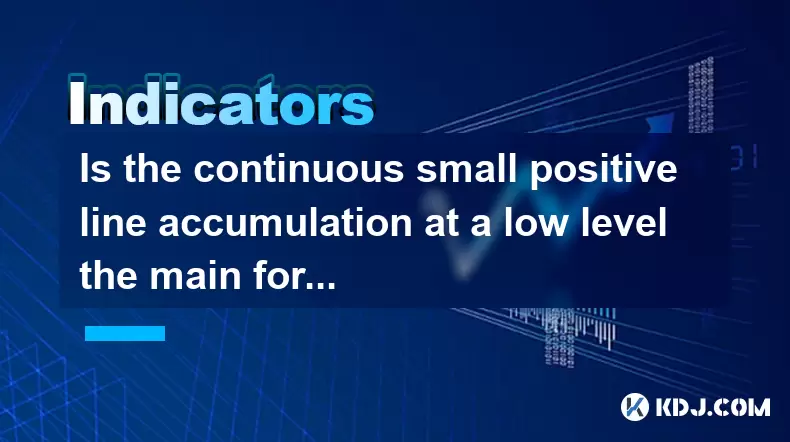
Is the continuous small positive line accumulation at a low level the main force to build a position?
Jun 30,2025 at 08:15pm
Understanding the Concept of Continuous Small Positive Line AccumulationIn cryptocurrency trading, continuous small positive line accumulation refers to a pattern where an asset experiences multiple consecutive candlesticks or bars that close higher than they open, but with relatively low volume and minimal price movement. This phenomenon is often obser...
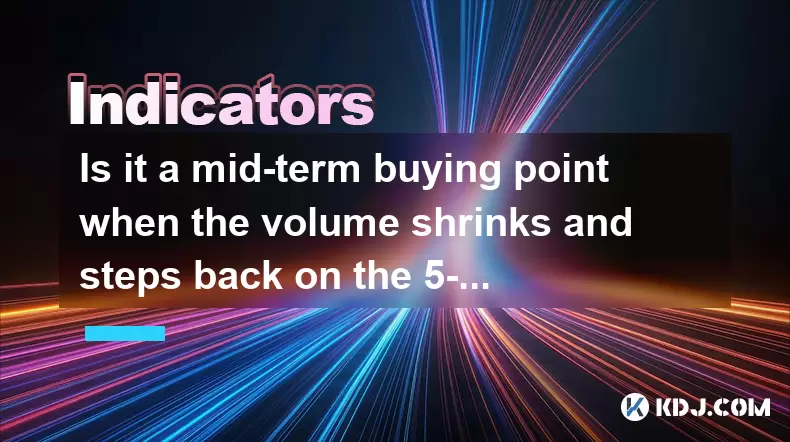
Is it a mid-term buying point when the volume shrinks and steps back on the 5-week line in the upward trend?
Jun 30,2025 at 07:49pm
Understanding the 5-Week Moving Average in Cryptocurrency TradingIn cryptocurrency trading, technical indicators such as the 5-week moving average are widely used to assess long-term trends. This indicator smooths out price volatility over a five-week period and provides traders with a clearer picture of the direction in which an asset is moving. When a...
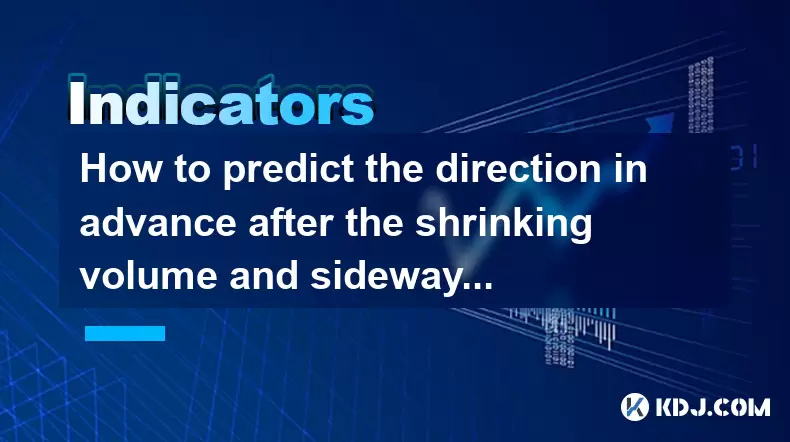
How to predict the direction in advance after the shrinking volume and sideways shock?
Jun 30,2025 at 08:57pm
Understanding Shrinking Volume and Sideways ShockIn the cryptocurrency market, shrinking volume refers to a period where trading activity significantly decreases. This often indicates a lack of interest or uncertainty among traders regarding the next price movement. Simultaneously, sideways shock occurs when the price moves within a narrow range without...
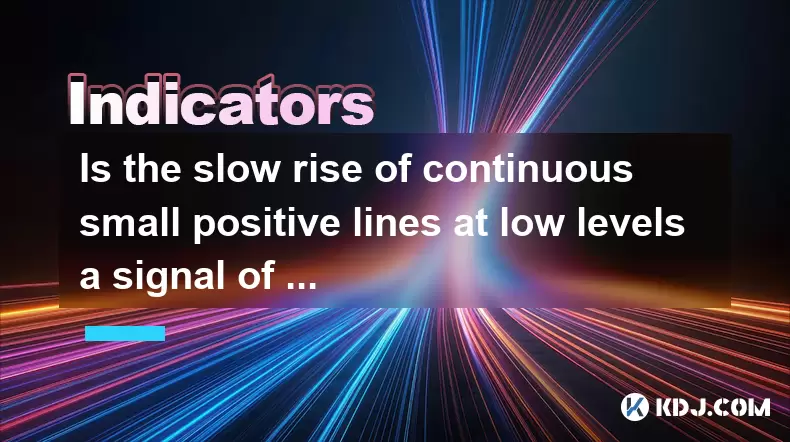
Is the slow rise of continuous small positive lines at low levels a signal of the main force absorbing funds?
Jun 30,2025 at 07:00pm
Understanding the Concept of Continuous Small Positive Lines in CryptocurrencyIn the realm of cryptocurrency trading, price patterns are often analyzed to predict future movements. One such pattern is the slow rise of continuous small positive lines at low levels, which refers to a situation where an asset’s price gradually increases over time through a...
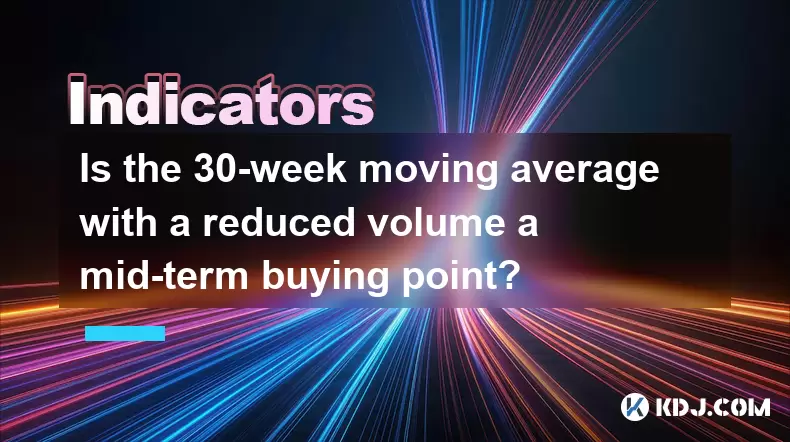
Is the 30-week moving average with a reduced volume a mid-term buying point?
Jun 30,2025 at 08:01pm
Understanding the 30-Week Moving Average in Cryptocurrency TradingThe 30-week moving average is a popular technical indicator used by traders to assess long-term trends in cryptocurrency markets. Unlike shorter timeframes such as the 50-day or 200-day moving averages, the 30-week version smooths out price data over a longer duration, reducing noise and ...
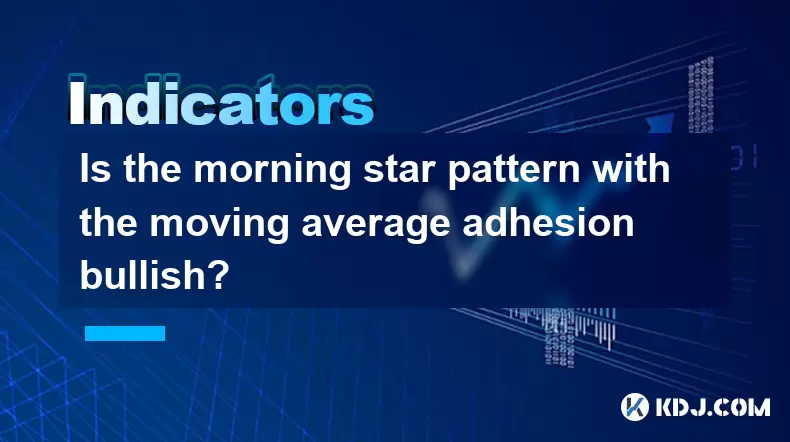
Is the morning star pattern with the moving average adhesion bullish?
Jun 30,2025 at 09:15pm
Understanding the Morning Star PatternThe morning star pattern is a widely recognized candlestick formation in technical analysis, especially within cryptocurrency trading. It typically signals a reversal from a downtrend to an uptrend. The structure of this pattern consists of three candles: a large bearish candle, followed by a small-bodied candle (or...

Is the continuous small positive line accumulation at a low level the main force to build a position?
Jun 30,2025 at 08:15pm
Understanding the Concept of Continuous Small Positive Line AccumulationIn cryptocurrency trading, continuous small positive line accumulation refers to a pattern where an asset experiences multiple consecutive candlesticks or bars that close higher than they open, but with relatively low volume and minimal price movement. This phenomenon is often obser...

Is it a mid-term buying point when the volume shrinks and steps back on the 5-week line in the upward trend?
Jun 30,2025 at 07:49pm
Understanding the 5-Week Moving Average in Cryptocurrency TradingIn cryptocurrency trading, technical indicators such as the 5-week moving average are widely used to assess long-term trends. This indicator smooths out price volatility over a five-week period and provides traders with a clearer picture of the direction in which an asset is moving. When a...

How to predict the direction in advance after the shrinking volume and sideways shock?
Jun 30,2025 at 08:57pm
Understanding Shrinking Volume and Sideways ShockIn the cryptocurrency market, shrinking volume refers to a period where trading activity significantly decreases. This often indicates a lack of interest or uncertainty among traders regarding the next price movement. Simultaneously, sideways shock occurs when the price moves within a narrow range without...

Is the slow rise of continuous small positive lines at low levels a signal of the main force absorbing funds?
Jun 30,2025 at 07:00pm
Understanding the Concept of Continuous Small Positive Lines in CryptocurrencyIn the realm of cryptocurrency trading, price patterns are often analyzed to predict future movements. One such pattern is the slow rise of continuous small positive lines at low levels, which refers to a situation where an asset’s price gradually increases over time through a...

Is the 30-week moving average with a reduced volume a mid-term buying point?
Jun 30,2025 at 08:01pm
Understanding the 30-Week Moving Average in Cryptocurrency TradingThe 30-week moving average is a popular technical indicator used by traders to assess long-term trends in cryptocurrency markets. Unlike shorter timeframes such as the 50-day or 200-day moving averages, the 30-week version smooths out price data over a longer duration, reducing noise and ...

Is the morning star pattern with the moving average adhesion bullish?
Jun 30,2025 at 09:15pm
Understanding the Morning Star PatternThe morning star pattern is a widely recognized candlestick formation in technical analysis, especially within cryptocurrency trading. It typically signals a reversal from a downtrend to an uptrend. The structure of this pattern consists of three candles: a large bearish candle, followed by a small-bodied candle (or...
See all articles

























































































